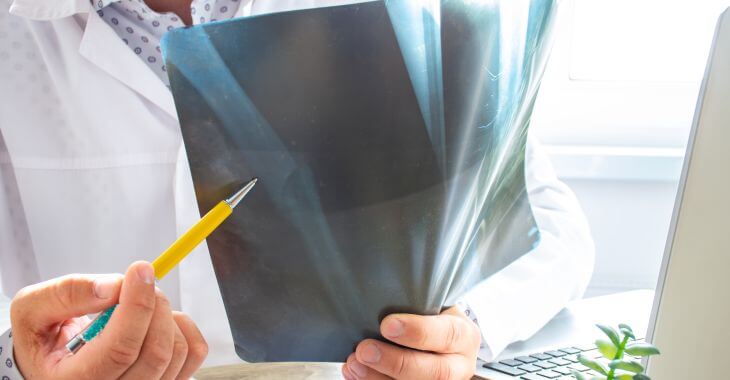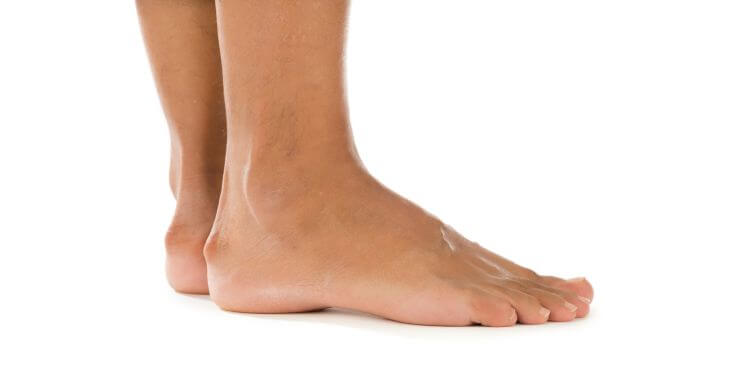What Are the Types of Fractures?

Broken bones or fractures are a common injury and require medical attention. Vehicle accidents, sports injuries, falls, disease and violence can all cause fractures when a bone is placed under too much stress. Some bone fractures require very little treatment, while others may need surgery and extensive rehabilitation for the patient. The treatment depends on what bone is broken and the type of fracture that occurred. Here are some of the common types of fractures and terms that are used to describe the extent of the injury.
Descriptive Terms of Broken Bones
When discussing bone fractures, there are both types of fractures and description terms of the injury. Descriptive terms announce the severity of fractures, which can help determine the treatment needed. Some of the descriptive terms that accompany the type of fracture can include:
- Open – the bone has broken the skin
- Closed – the fracture did not break the skin
- Displaced fractures – the ends of the bone do not line up
- Stable – the ends of the broken bone still are aligned
- Partial – the bone is not completely broken
- Complete – the bone is broken into two pieces or more
There are other terms that may be combined with the type of fracture. All help describe the injury and indicate what type of treatment is needed for recovery.
8 Types of Fractures
There are many different types of bone fracture injuries, from small hairline fractures to complex open spiral breaks. Each requires different treatments to allow the bone to heal and recover as much as possible. The following are eight of the more common types of fractures that impact the different bones in the body.
- 1. Compression Fracture
- When a bone is weak, it can collapse under pressure. A compression fracture occurs when weight causes the bone to flatten or shatter. This is most common in the vertebrae in the spine, usually caused by weakening from osteoporosis.
- 2. Traverse Fractures
- A straight line break across the bone is called a traverse fracture. This type of break is usually associated with high impact to the bone that causes it to snap in a straight line, often a vehicle or fall accident. A complete traverse fracture means the bone is broke in a straight line into two pieces.
- 3. Stress Fractures
- Stress or hairline fractures are smaller fractures that are usually caused by repetitive stress on the bone. The stress fractures are small cracks in the bone, but the bone is largely still intact. These types of fractures can be difficult to diagnose, as the hairline crack can be hard to see on x-rays.
- 4. Spiral Fracture
- The long bones in the arms and legs can be affected by spiral fractures. These fractures spiral around the outside of the length of the bone. A severe twisting motion of the limb is what usually causes a spiral fracture, common in sports injuries and vehicle accidents.
- 5. Segmental Fracture
- If the bone has two complete breaks, the piece of bone between the breaks can be floating loose of the rest of the bone. This is called a segmental fracture and the ends of the segmented bone may or may not align – it can be stable or displaced on either end. These can also result in open fractures that break the skin, especially if it is an oblique fracture.
- 6. Impacted Fracture
- Compression of a broken bone that causes the broken ends to be crushed together is caused an impacted fracture. The ends of the bones can shatter into many pieces that can be difficult to repair. This type of damage to the ends of the bone can require surgery and longer healing time for recovery.
- 7. Communicated Fracture
- When a bone is shattered into three or more pieces, it is called a communicated fracture. There are often shards of bone that are floating near the break in a communicated fracture. These are often caused by severe trauma or impact to the bone, usually a vehicle or long fall accident. It is common for communicated fractures to be open or displaced fracture injuries.
- 8. Oblique Fractures
- When the break in the bone is diagonal, it is called an oblique fracture. Most oblique fractures occur in the long bones of the arms or legs from a sharp blow to the limb. The pointed, sharp end of an oblique break can cause an open fracture where the bone exits the skin.

There are many types of fractures and different treatments, depending on the complexity of the break. Treatments can vary from conservative options like rest and reduced use of the bone as it heals, to braces, casts and surgery, followed by physical therapy and rehabilitation. Regardless of the severity of the break, all types of fractures should be examined by a doctor or orthopedic specialist to determine the best treatment plan.
The information provided on this website, including text, graphics, images, and other materials, is intended solely for informational purposes and should not be used as a substitute for professional medical advice, diagnosis, or treatment.


)